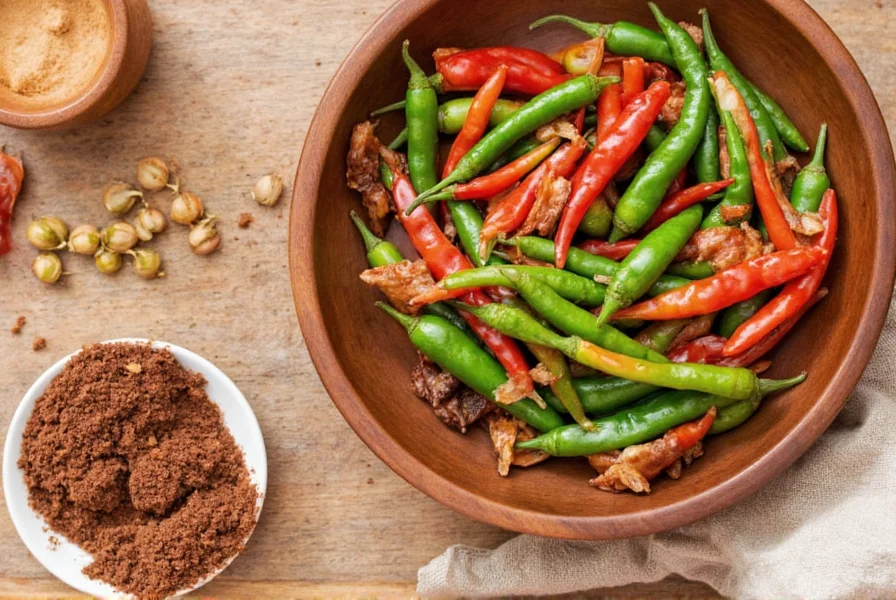
| Chili Type | Heat Level (SHU) | Flavor Profile | Best Use Case | Availability |
|---|---|---|---|---|
| Arbol Chile | 15,000–30,000 | Grassy, nutty, smoky | Toasted in oils, ground into salsas | Moderate |
| Cayenne | 30,000–50,000 | Sharp, pungent | Ground into rubs or sauces | High |
| Fresno | 2,500–10,000 | Smoky, sweet | Fresh in salsas, pickling | Moderate |
| Serrano | 10,000–23,000 | Earthy, grassy | Raw or cooked | High |
| Guajillo | 2,500–5,000 | Berry-like, tea notes | Dried for sauces, marinades | Moderate |
| Thai Bird's Eye | 50,000–100,000 | Citrusy, intense | Curries, hot sauces | Moderate to High |
Introduction: The Heat and Flavor of Arbol Chile
Looking for the best Arbol chile substitute? Cayenne pepper is the closest match for heat level and versatility, but depending on your dish, other options like Serrano or Thai Bird's Eye may be better. This guide provides exact substitution ratios, heat level comparisons, and recipe-specific tips from professional culinary guidelines to help you replace Arbol chiles confidently in any dish.

Why You Might Need an Arbol Chile Substitute
There are several reasons you might find yourself searching for an alternative:
- You can't find Arbol Chiles at your local store
- You want a milder or hotter version
- You're out of stock and need a quick fix
- You're cooking for someone who prefers a different type of heat
Knowing which chili pepper stands in best for Arbol helps keep your culinary creativity alive — and your dishes spicy!
Top 5 Arbol Chile Substitutes for Your Kitchen
Based on heat level, flavor profile, and common culinary uses, here are the top substitutes that deliver on flavor, heat, or both:
- Cayenne Pepper – For a similar heat level and easy availability (best for dry rubs and sauces)
- Fresno Chili – For fresh applications and moderate heat (ideal for salsas and pickling)
- Serrano Pepper – For raw or cooked use with adjustable heat (perfect for tacos and fresh salsas)
- Guajillo Chili – For a sweeter, slightly less spicy alternative (great for adobo sauces and marinades)
- Dried Thai Bird's Eye Chili – For more heat and intense flavor (best for Thai curries and hot sauces)
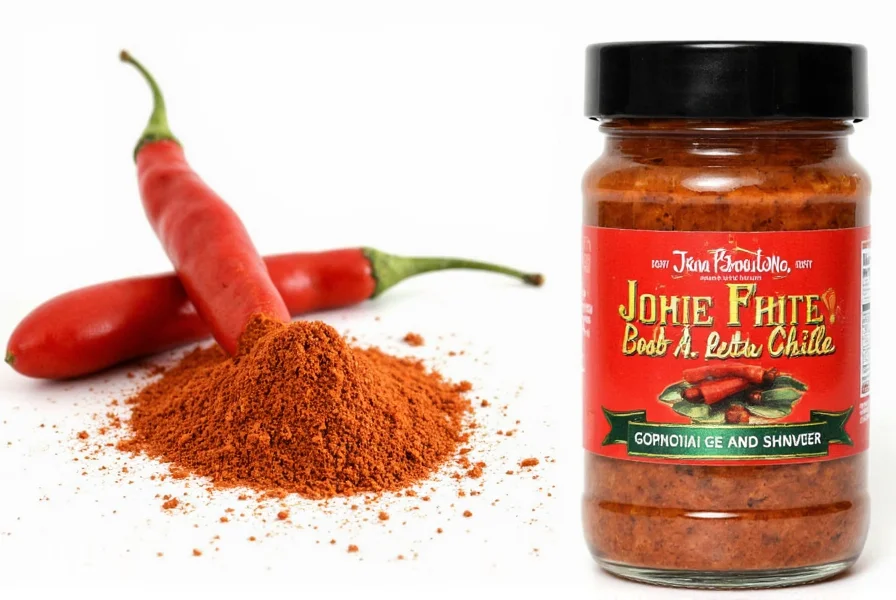
Buying Guide: What to Look for in a Good Chili Substitute
If you're picking up a new chili pepper to stand in for Arbol, here's what to consider:
- Heat Level: Do you want to match, reduce, or increase the spice? Serrano gives flexibility; Thai chilies ramp things up. Pro tip: Use 1/2 teaspoon cayenne powder for every 1 dried Arbol chile to match heat intensity.
- Form: Whole dried peppers? Fresh? Ground? Cayenne powder works great in dry rubs, while Serranos work fresh or roasted. For quick substitutions, check the spice aisle for cayenne or the produce section for fresh Fresno/Serrano.
- Flavor Notes: Some chilies add sweetness (like Guajillo), others bring sharpness (like cayenne). Think about how this affects your final dish. Guajillo offers berry-like notes for Mexican sauces, while Thai Bird's Eye adds citrusy brightness to Asian dishes.
- Texture and Cooking Method: Fresnos are tender and juicy; Thai chilies are small and potent. Consider how they'll behave when chopped, sliced, or blended. For infused oils, toast dried Thai chilies for 2 minutes to release maximum flavor.
- Availability: Go for what's in season or already in your pantry. Serrano and cayenne are often easier to find than specialty dried chilies. When substituting in Mexican recipes, cayenne is the most accessible option at most grocery stores.
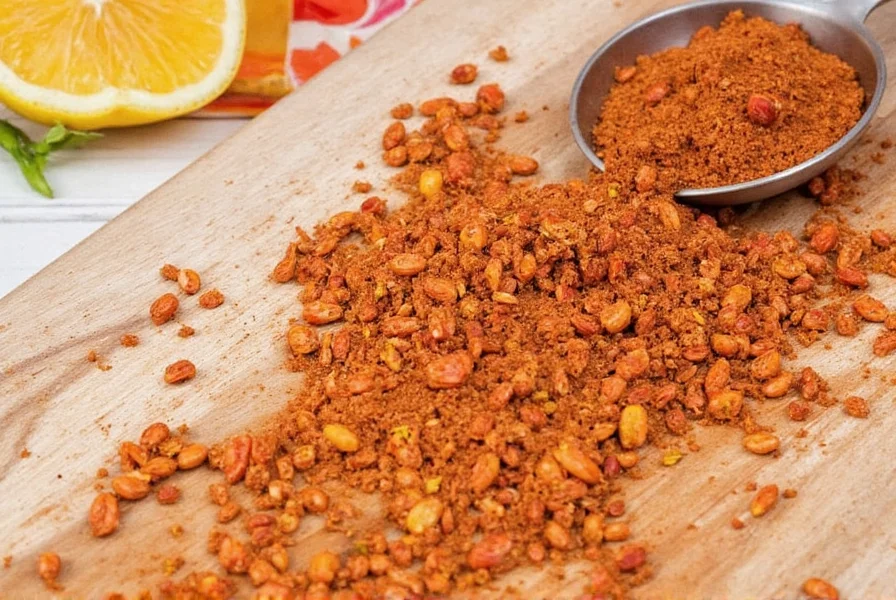
How to Use These Substitutes in Popular Recipes
Let's get practical. Here's how each substitute performs in real-life dishes with exact ratios:
- Red Oil or Infused Oils: Replace Arbol with cayenne powder for a richer, smoother oil (use 1/4 tsp per cup of oil) or use Thai chilies if you want a punchier kick (use 2-3 whole chilies per cup of oil).
- Classic Salsa Roja: Use Serrano or Fresno peppers for a fresh take with less heat but full-bodied flavor (1 Serrano = 1 Arbol chile for similar heat; 2 Fresnos = 1 Arbol for milder version).
- Chicken Tinga or Tacos al Pastor: Try dried Guajillo for a sweeter, deeper sauce with moderate spice (soak 2 Guajillos in hot water for 10 minutes, then blend with 1/2 cup broth).
- Spicy Thai Curry: Thai Bird's Eye chili brings authentic heat and brightness without needing much else (use 5-10 whole chilies per batch for medium heat).
- Dry Rubs or Marinades: Cayenne powder shines here — it dissolves well and spreads evenly across meats or veggies (use 1 tsp cayenne per 1 lb meat for Arbol-level heat).
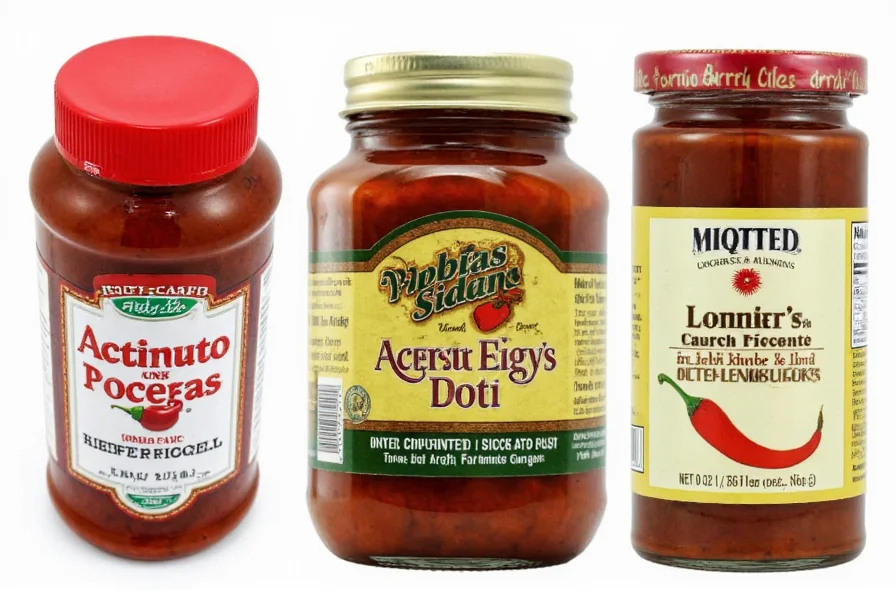
Frequently Asked Questions About Arbol Chile Substitutes
If you're looking for Arbol chile alternatives, these common questions might help clarify your substitution choices:
What is the closest substitute for Arbol chile?
Cayenne pepper is the closest substitute for Arbol chile in terms of heat level and usage. Both range from 30,000-50,000 Scoville units and work well when ground into sauces or rubs. The main difference is that Arbol has more smoky, nutty notes while cayenne is sharper and more pungent. For Mexican dishes, cayenne is the top choice when Arbol is unavailable.
Can I use cayenne instead of Arbol chile?
Yes, cayenne makes an excellent substitute for Arbol chile, though it's slightly hotter (30,000-50,000 SHU vs Arbol's 15,000-30,000 SHU). Use about ¾ the amount of cayenne to match Arbol's heat. Cayenne works particularly well in dry rubs, sauces, and infused oils where Arbol would normally be used. For precise substitution: 1/4 tsp cayenne = 1 dried Arbol chile.
How much cayenne equals one Arbol chile?
One dried Arbol chile is roughly equivalent to ¼ teaspoon of cayenne powder. When substituting, start with less (⅛ teaspoon) and adjust to your heat preference, as cayenne is generally hotter than Arbol. Professional chefs recommend this ratio for all dry spice applications.
Is Serrano pepper hotter than Arbol?
No, Arbol is generally hotter than Serrano. Arbol ranges from 15,000-30,000 Scoville units while Serrano ranges from 10,000–23,000. Serrano can be a good substitute when you want slightly less heat but similar grassy, earthy flavor notes. Use Serrano when you want fresh pepper applications. For salsa, 1 Serrano pepper = 1 Arbol chile for similar heat intensity.
Can I substitute Guajillo for Arbol?
You can substitute Guajillo for Arbol, but expect a significantly milder heat (2,500-5,000 SHU vs 15,000-30,000) and different flavor profile. Guajillo offers berry-like, tea notes rather than Arbol's smoky heat. Use Guajillo when you want the color and some depth without intense heat, such as in chicken tinga or adobo sauces. For authentic Mexican flavor, combine Guajillo with 1/8 tsp cayenne to boost heat.
What's the difference between Arbol and Cayenne?
While both are hot red chilies, Arbol chiles are slender dried peppers with a grassy, nutty flavor (15,000-30,000 SHU), typically used whole or crushed. Cayenne refers to both a fresh pepper and a ground spice, with a sharper, more pungent heat (30,000-50,000 SHU). Ground cayenne is more potent than Arbol powder. For spice blends, cayenne provides consistent heat while Arbol adds complex smoky depth.
Can I make my own Arbol chile powder?
Yes! To make Arbol chile powder, toast dried Arbol peppers in a dry skillet for 1-2 minutes until fragrant but not burnt, then blend in a spice grinder or mortar and pestle until fine. Store in an airtight container away from light. This works well for salsas, moles, and spice rubs. Professional tip: Toasting enhances the smoky notes and reduces bitterness.
Are Arbol chiles the same as red pepper flakes?
No, Arbol chiles are specific dried peppers, while red pepper flakes are typically a blend of various dried chilies (often including cayenne). Arbol chiles have a more consistent heat and distinct flavor. If using red pepper flakes as a substitute, use sparingly as the heat level can vary significantly between brands. For reliable results, choose pure cayenne or Arbol powder instead of generic red pepper flakes.
Conclusion: Spice Up Your Life with Confidence!
While the Arbol Chile has its place in the pantheon of essential spices, knowing the right substitute means you never have to sacrifice flavor or excitement in your kitchen. Whether you're making a rich mole, a vibrant salsa, or a simple garlic chili oil, the right chili can save the day — and maybe even elevate your dish beyond the original. For Mexican cooking, cayenne is the most reliable substitute; for Asian dishes, Thai Bird's Eye delivers authentic heat.
So next time you're staring into the spice drawer wondering what to swap for Arbol, just remember: There's always a spicy solution waiting to ignite your taste buds. Now go make magic — and don't be afraid to turn up the heat!
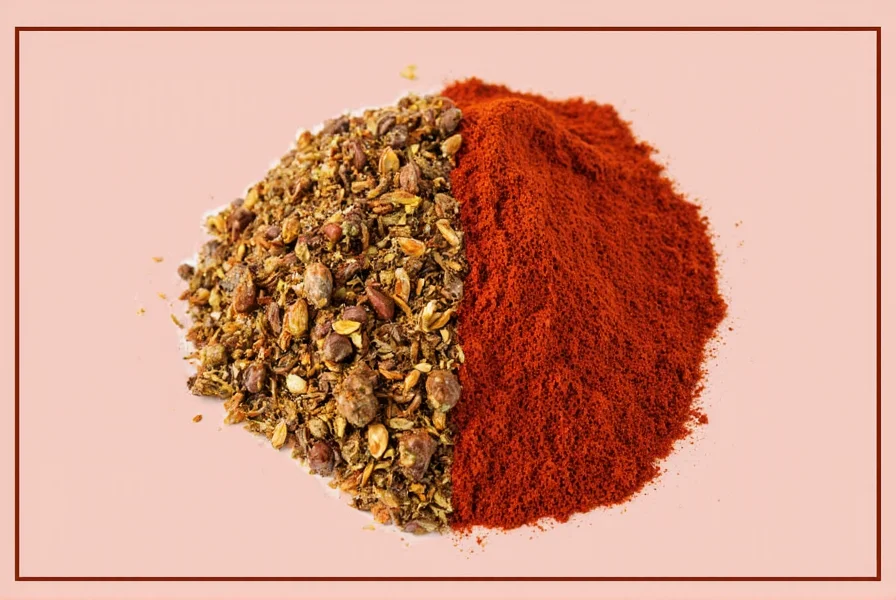

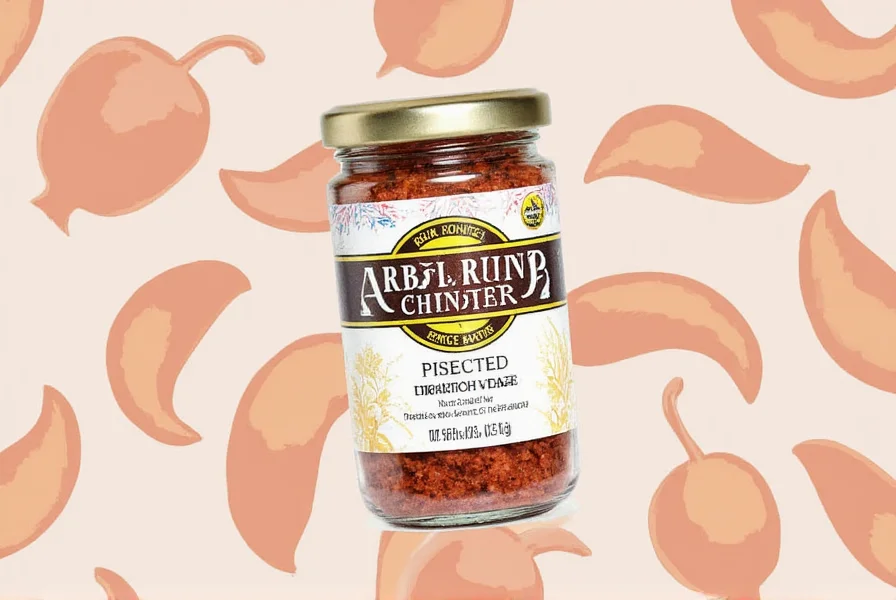









 浙公网安备
33010002000092号
浙公网安备
33010002000092号 浙B2-20120091-4
浙B2-20120091-4